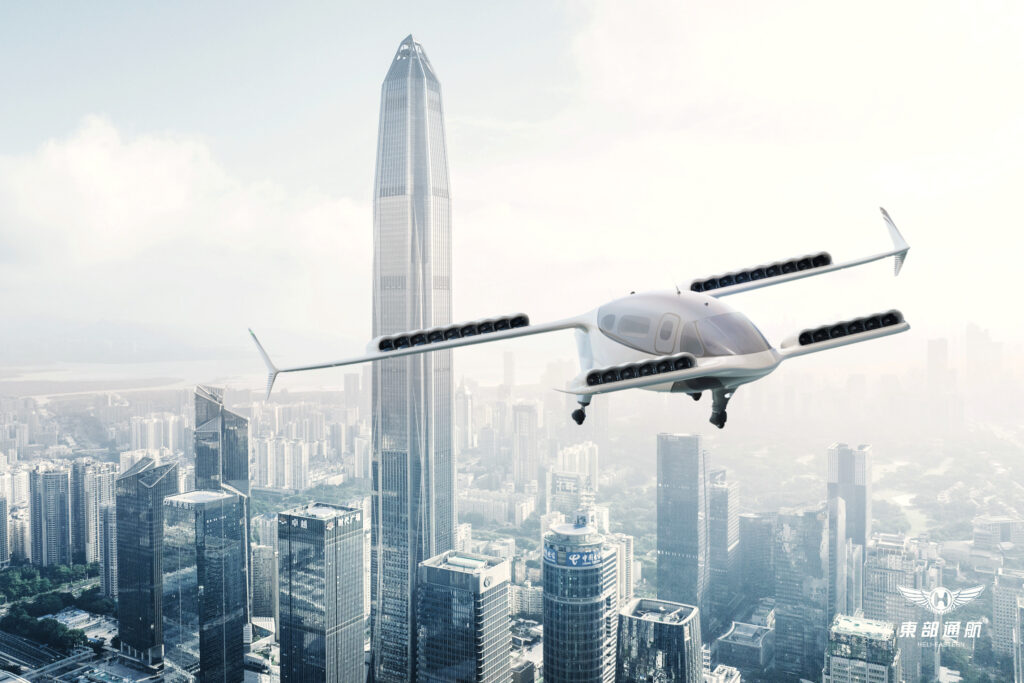Insights from Collins Aerospace on Collaboration with Lilium, and Updates from Paris Air Show


Raphaël Queval of Collins Aerospace shares insights on the company’s collaboration with Lilium. This article also covers some of the latest updates from the eVTOL developer, including two announcements made at the Paris Air Show this week. (Photo: Lilium/Heli-Eastern)
Earlier this year, a collaboration between Lilium and Collins Aerospace was made official. The two companies are working together to design and build new flight controls for the Lilium Jet, an electric vertical take-off and landing (eVTOL) aircraft.
The system that Collins is designing will integrate all conventional mechanical and electrical flight controls into two sidesticks. As part of the partnership, Collins will also assist with the certification of the inceptors of the Lilium Jet to ensure that it meets commercial aviation standards.
Collins Aerospace offers five decades of experience in flight deck controls, noted Yves Yemsi, Chief Operating Officer at Lilium. “Our two companies’ collaborative development approach allows us to re-imagine the cockpit and pilot experience,” Yemsi stated in the announcement.
Beyond its partnership with Lilium, the team at Collins Aerospace is also involved in multiple projects for the EU’s SESAR 3 Joint Undertaking, which is designed to encourage the development of new technologies for managing eVTOLs, drones, and conventional aircraft operating in the same airspace.

(Photo: Lilium)
The Latest Updates From Lilium
Lilium announced a partnership with UrbanV this week to develop vertiport infrastructure. UrbanV, a company focused on design, construction, and management of vertiport networks for urban air mobility (UAM) and advanced air mobility (AAM), plans to launch its operations first in Italy and the French Riviera. The partnership will establish necessary networks and infrastructure for customers of Lilium.
Also this week, Lilium made two announcements at the Paris Air Show. The eVTOL developer has entered an agreement with Shenzhen Eastern General Aviation Co., Ltd (Heli-Eastern), a low-altitude general aviation carrier and helicopter service provider in China, to identify potential sites for vertiports and other ground-based eVTOL infrastructure. Heli-Eastern expects to order 100 Lilium Jets under the terms of the agreement.
Lilium signed a Memorandum of Understanding (MoU) with the Bao’an District of Shenzhen municipality, the company announced on June 19. The Bao’an District will support the Lilium Jet’s entry into service in China, and the eVTOL developer is planning to open a regional headquarters in the district by the end of 2023. “The collaboration will initially focus on the Guangdong–Hong Kong-Macao Greater Bay Area, with a population of over 85 million people, with plans to grow across China and the broader Asia-Pacific region,” according to Lilium. Klaus Roewe, CEO of Lilium, commented that China is projected to hold as much as 25% of the eVTOL market.
Last month, Lilium signed agreements with both Air-Dynamic SA and ASL Group. A Switzerland-based private jet and helicopter company, Air-Dynamic SA plans to manage eVTOL operations in Italy and Switzerland, and the agreement includes pre-delivery payments for as many as five Lilium Jets. ASL Group, a European business jet operator, made an agreement to acquire six Pioneer Edition Jets from Lilium.

(Photo: Lilium)
A Q&A With Collins Aerospace
Raphaël Queval, business development manager for Collins Aerospace, offered Avionics additional insights on the collaboration with Lilium as well as details about Collins’ expertise in developing inceptors for a variety of applications.
Avionics International: Could you explain how the inceptors developed by Collins for commercial jets integrate with other avionics within an aircraft?
Raphaël Queval: Inceptors are mainly interfaced with the Flight Control Computer, but the integration and link between inceptors and avionics remain the airframer’s responsibility, as was the case with previous developments. Collins, as a supplier of both inceptors and avionics, is now studying how increased integration and smarter solutions can be proposed to customers.
Avionics: Are there any particular innovations or unique components in the inceptors developed by Collins in recent years?
Queval: Collins started to propose a passive Side Stick Unit and moved to an active solution about ten years ago. Collins provides tailored solutions to our customers to address any market segment—such as military, civil, bizjet, fixed wing, rotorcraft, and more recently advanced air mobility (AAM) applications—while keeping a universal architecture with the ability to interface with any aircraft solution. In addition, Collins is working on verticalization of strategic components and continuously investing to optimize weight, space envelop, and overall integration.
Regarding the inceptors that Collins is developing for Lilium’s aircraft, what will differentiate the system from conventional sidestick systems?
Queval: AAM are hybrid aircraft in terms of flight controls. The flight controls are in between conventional airplanes and rotorcraft. The Lilium Jet inceptors will provide safe and intuitive handling qualities, easy access to functionalities, and an aesthetic, ergonomic design. While integrating all conventional mechanical and electrical flight controls into two sidesticks, the Collins system brings a new piloting philosophy for single-pilot operations in the eVTOL realm. The system will be designed to bring significant space and weight savings compared to conventional sidesticks.
What factors led to the collaboration between Collins and Lilium?
Collins’s extensive expertise and experience in developing and certifying inceptors for the civil aviation market combined with the highest production rates for inceptors in the aerospace industry played an important role in our selection for Lilium Jet inceptors development.
Could you discuss how the inceptors will contribute to the overall safety of the aircraft?
Safety is mainly linked to the aircraft architecture like redundancy or segregation. Collins contributes with our critical system.
What role will Collins play in certifying the inceptors for the Lilium Jet to meet commercial aviation standards?
Certification belongs to airframers, but Collins supports this activity by determining flight safety parts within the inceptor and by addressing equipment safety analysis, inceptor qualification activity, and providing special documentation required by the airframer.
Are there any challenges in developing inceptors for eVTOL aircraft compared to conventional aircraft?
eVTOL is an emerging segment. Companies working in this segment are innovating to propose the best path forward. As a result, this can lead to very specific inceptor solutions such as the number of inceptors, grip design including functions integrated, and number of axes per inceptor.
The post Insights from Collins Aerospace on Collaboration with Lilium, and Updates from Paris Air Show appeared first on Avionics International.
—————
Boost Internet Speed–
Free Business Hosting–
Free Email Account–
Dropcatch–
Free Secure Email–
Secure Email–
Cheap VOIP Calls–
Free Hosting–
Boost Inflight Wifi–
Premium Domains–
Free Domains





